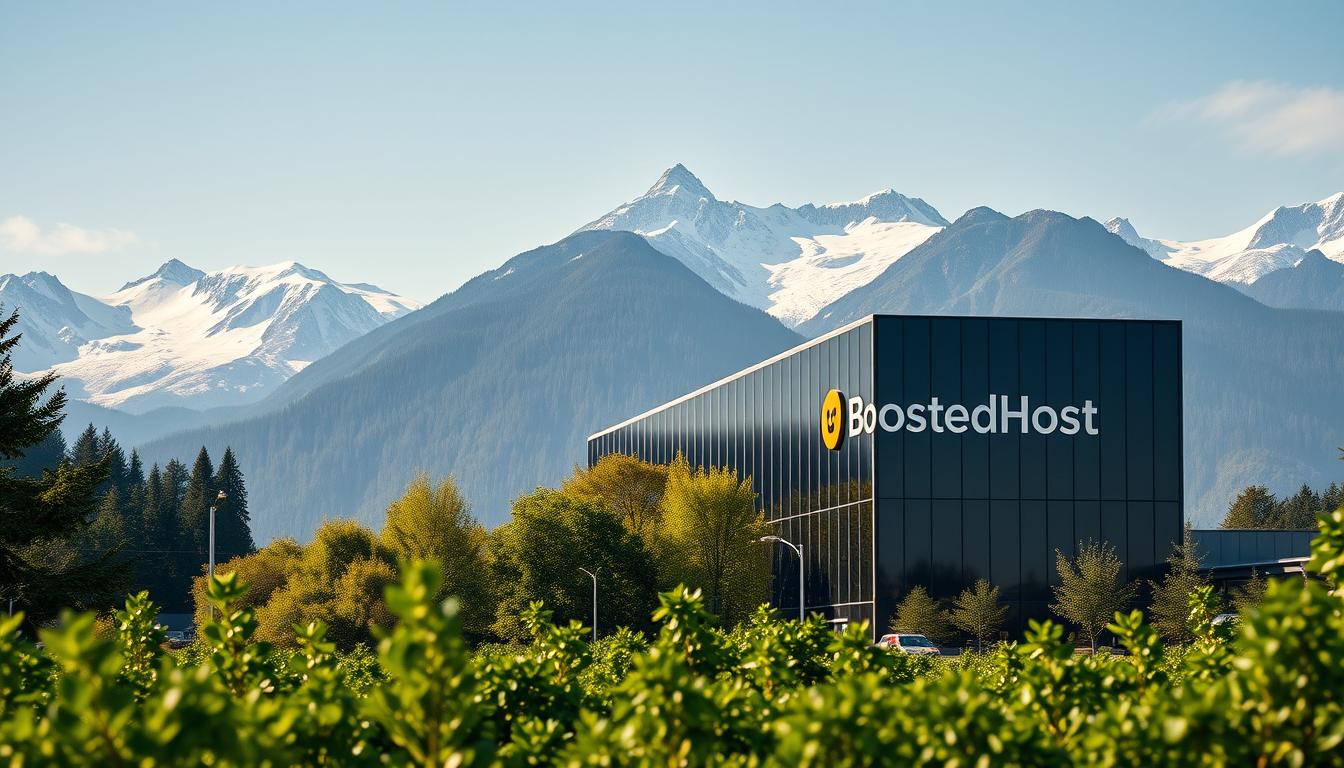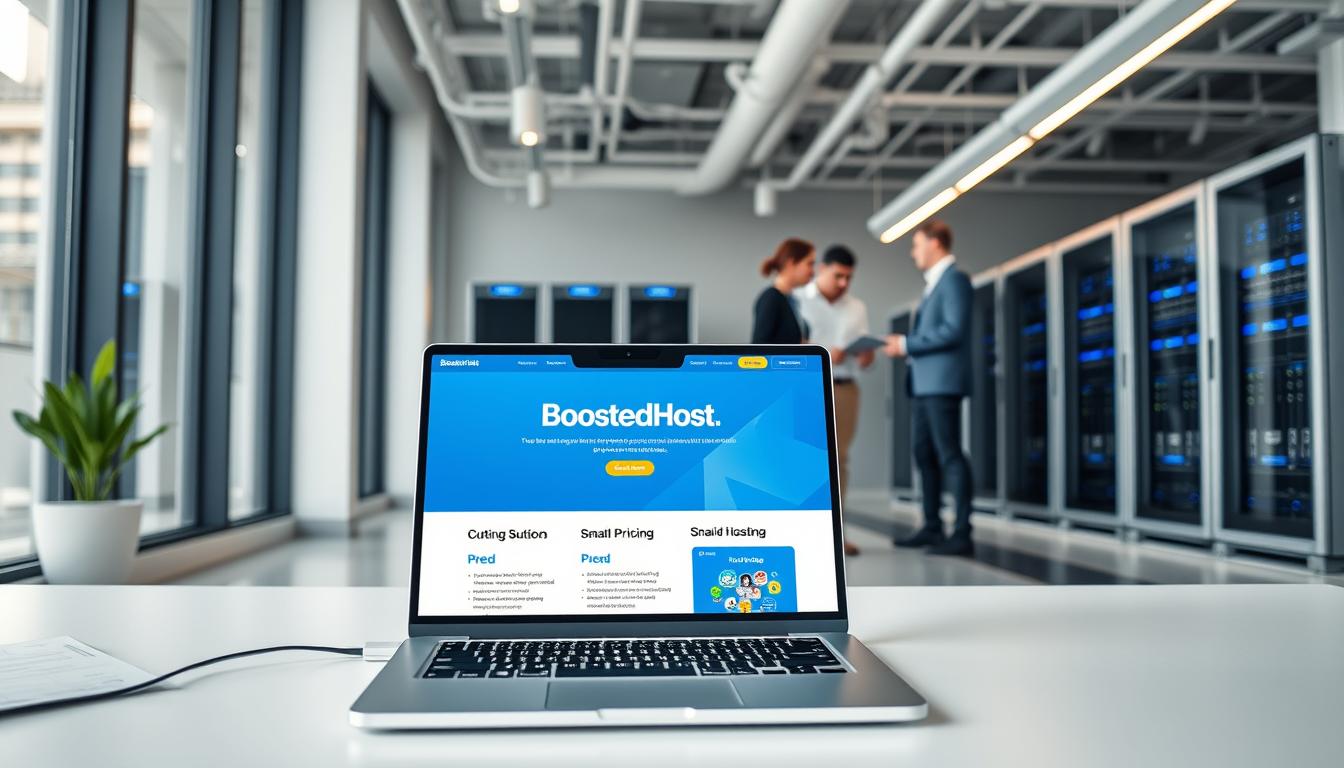We know the stakes. Choosing a host can feel personal. Your site carries your work, your income, your reputation. We want you to pick a platform that moves fast and stays reliable.
In this short review, we set a clear, data-backed frame. We compare two providers on speed, uptime, pricing transparency, included features, AI tools, and support. Our goal is simple: help you choose with confidence and speed.
Why this matters: a sub-200ms global TTFB and 99.99% uptime cut load times and lost sales. We highlight a Swiss-engineered provider that pairs LiteSpeed servers, an integrated CDN, free SSL, daily backups, and Orbit—an AI site builder that launches a professional website in under 5 minutes.
We also fairly summarize the UK-based provider’s history, footprint, and performance claims so you get context before the deep dive. Read on and decide which service fits your needs—whether you’re a creator, small business, or agency.
Key Takeaways
- We present a concise, evidence-led comparison to guide your choice.
- One provider emphasizes ultra-fast LiteSpeed + CDN and transparent prices.
- Speed, uptime, and included security features drive real ROI for websites.
- Orbit can launch a polished site in under five minutes for beginners.
- Support responsiveness and global data centers matter for agencies.
At a glance: who each host is best for in 2025
We break down who should choose each host based on real needs and day-one wins. Our focus is practical — reduce setup time, cut admin, and get secure, fast performance from day one.

Quick buyer profiles: individuals, small businesses, agencies
Individuals: We recommend the Swiss-engineered option for instant launch with Orbit. You get a ready-to-go site, free SSL, daily backups, and malware protection without upsells. That means your blog or portfolio can go live in minutes.
Small businesses: Choose the host that delivers sub-200ms global TTFB and 99.99% uptime for smooth checkouts and booking flows. The alternative is budget-friendly: Economy plans offer 100GB SSD, 512MB RAM, and unmetered bandwidth but may limit free SSL to higher tiers.
Core differentiators you’ll notice on day one
- Performance: LiteSpeed + CDN and fast caching options.
- Security: Auto SSL, daily backups, and malware scanning included.
- Support: 24/7 expert help that resolves most issues in minutes vs scheduled UK live support and ticketing.
- Developer & agency options: multi-region deployments, PHP/Node.js/Python stacks, and migration tools.
“Pick the option that reduces admin overhead and accelerates site speed.”
Decision lens: weigh transparent pricing, the plan options, and support rhythm. That will determine which provider fits your business and services without surprises.
BoostedHost vs tsoHost: testing methodology and data sources
Our testing focuses on measurable signals that predict real business outcomes. We combine lab runs, server-side traces, and field pings to show how each host performs in practice.

Performance signals: TTFB, Lighthouse, real-world pings
What we measure: synthetic Lighthouse audits, server timings (TTFB and backend duration), and multi-region pings. These give a rounded view of speed and stability.
- Lab metrics: FCP, TTI, LCP, CLS, Speed Index and TBT — Lighthouse gives consistent snapshots.
- Server traces: TTFB and backend duration reveal how the servers and PHP handlers behave under load.
- Field pings: repeated checks from the U.S., Europe, and Asia show real latency for global visitors.
For example, measured Lighthouse values for one provider show FCP/TTI/LCP ~447ms, TTFB 106ms, backend 53ms, and fully loaded ~499ms. We use that as a balanced baseline for comparisons.
Uptime tracking windows and SLA interpretations
We track 30-day and 90-day windows to avoid cherry-picked results. Short windows can look perfect. Longer windows reveal consistency.
“A 99.9% SLA sounds solid, but the difference between 99.9% and 99.99% is measurable in minutes of downtime per year.”
We translate SLAs to real time so you can judge business impact. Then we map those numbers back to your use case — eCommerce, media, or brochure sites — and explain what the uptime and performance data imply for your web hosting choice.
Speed and performance showdown
Speed decides conversions. We compare an event-driven LiteSpeed stack with a traditional shared setup to show real-world effects on pages, carts, and checkouts.
LiteSpeed and global CDN advantage
LiteSpeed servers use an event-driven model and LSCache to reduce CPU spikes and speed up dynamic pages. A global CDN shortens round-trips and steadies performance across the U.S. and abroad.
Sub-200ms global TTFB vs reported figures
We target sub-200ms global TTFB as a metric of consistency. By comparison, testing showed a backend TTFB of 106ms, backend duration 53ms, FCP 447ms, and fully loaded ~499ms — an average result for many competitors.
WordPress and WooCommerce considerations
Dynamic carts and checkouts need server-level caching, opcode tuning, and balanced resource allocations to avoid noisy-neighbor slowdowns. That’s why tuned PHP handlers, HTTP/3, Brotli, and edge caching matter for WooCommerce.
- Event-driven servers cut CPU load on dynamic requests.
- Edge caching + Brotli improves payloads and latency.
- Transparent resource allocations prevent oversold issues.
For optimized WooCommerce builds, see our recommended WooCommerce hosting options that combine these features for steady performance.
Uptime and reliability over the long haul
Every minute your site is down costs leads, trust, and sometimes real dollars. We measure uptime as a business metric — not a marketing number.
99.99% availability vs observed figures
We report a 99.99% average uptime for the Swiss-engineered host. That higher availability means fewer missed orders and fewer support escalations.
By contrast, a 90-day observation for the UK provider showed 99.965% uptime. Their published SLA is 99.9%. At 99.965%, estimated annual downtime is roughly 3 hours, 4 minutes, 4 seconds.
Real business impact: minutes translated
- Percentages into minutes: a tiny percentage shift becomes hours of lost site access per year.
- Proactive monitoring: instant escalation and 24/7 expert support reduce incident duration to minutes, not hours.
- Scheduled maintenance: clear windows and timely notices cut surprise outages and lower support load.
- SEO & paid campaigns: higher uptime stabilizes rankings and ad conversion performance.
Fewer outages mean fewer refunds, fewer calls to your team, and less reputational risk for companies that rely on web services. We prefer providers that treat uptime as continuous data and fix issues fast.
Plans, pricing transparency, and total cost of ownership
We examine what you actually pay over 12 months, not just the headline rate.
Clear billing and included essentials
No hidden fees is the promise from the transparent provider. Free SSL, daily backups, malware protection, and a CDN come with most plans. That reduces third-party subscriptions and lowers total cost.
Tier quirks and real add-ons
The UK provider lists Economy £3.99, Deluxe £5.99, Ultimate £8.99, and Maximum £14.99 (ex VAT). Entry tiers may require paid SSL or limited AutoSSL. Annual offers sometimes include a free domain. Their 30-day money back guarantee applies to many purchases.
Monthly vs annual, and the math
Choose month-to-month for flexibility or annual to save. We map what you’ll pay after adding required add-ons — SSL, migrations, and security tools — to reveal true TCO.
“Transparent pricing keeps your focus on growth, not surprise bills.”
- Included by default: SSL (varies), backups, CDN, malware scanning, email, migrations.
- Watch for paid SSL on entry tiers and migration limits that raise costs.
- Compare 12-month totals to see which hosting service offers real value.
Feature-by-feature comparison
Let’s inspect security, admin tools, and email so you avoid common setup delays.
SSL, backups, malware: One provider bundles free SSL, daily backups, and always-on malware protection. That means sites are protected from day one. Renewals and automation happen behind the scenes to prevent expiry-related outages.
Control panel and DNS: Both offer cpanel access, but nameserver handling differs. One host provides simple nameserver setup for fast go-live. The other limits free SSL to higher tiers and often requires manual A-records with external domains — a common friction point for customers.
Migration and email
We see white-glove migrations for complex WordPress and WooCommerce sites. That includes database integrity checks and staged cutovers. Free WordPress migration is available from the UK-based provider, but DNS steps may slow launch.
Email tooling: Mailboxes use reliable delivery and spam controls. One provider uses Flockmail-style infrastructure. Both provide mailbox management suitable for business needs.
“Bundled security, clear DNS flows, and solid email reduce time-to-value for web projects.”
AI tools and site launch velocity
AI tools now let teams launch a polished website in minutes, not days. We built Orbit to streamline launch flows for rapid MVPs, rebrands, and campaign microsites.
How Orbit works:
- Select a business type and tone.
- Auto-generate copy, layout, and imagery.
- Deploy instantly to a secure, CDN-backed site.
Orbit speeds marketing timelines and cuts agency billable hours. Teams get a working web presence fast. That reduces churn on design rounds and shortens approval loops.
Integration and safety: Orbit deploys with our CDN, AutoSSL, and daily backups. That means a secure, fast site from minute one with built-in restore points.
| Capability | Orbit AI Builder | Other provider (reviewed sources) |
|---|---|---|
| AI-generated content & design | Yes | No advertised tool |
| One-click deploy + CDN | Yes | Partial |
| Included SSL & backups | Yes | Depends on plan |
| Handoff to full CMS | Simple export & upgrade path | Standard migration tools |
We recommend Orbit for small businesses, solopreneurs, and agencies that need fast pilots. When your project grows, you can hand off to a full CMS without vendor lock-in.
“Launch fast. Iterate later.”
Customer support and responsiveness
When incidents happen, the speed and skill of support decide outcomes. We staff engineers on every shift so most tickets are triaged and resolved in minutes, not hours. That reduces back-and-forth and cuts mean time to recovery.
24/7 expert support that resolves most requests in minutes
Engineer-first responses mean your issue lands with a trained specialist immediately. Typical first-response times are under 15 minutes for critical incidents and under 60 minutes for standard requests.
UK-based schedules and channel differences
One provider offers ticketing 24/7 and live chat plus phone from 7:00–24:00 UK time. Reports show some channels can take up to ~12 hours for a full reply. Their agents and knowledge base are helpful, but live-hours are regionally tuned.
Channels, SLAs, and first-contact resolution
- Channels: chat, phone, and tickets — pick severity and get matching SLAs.
- Escalation path: frontline agent → engineer triage → on-call specialist.
- First-contact resolution is our KPI. We optimize tooling and documentation to hit it.
- Proactive monitoring often alerts us before customers notice issues — reducing downtime and follow-ups.
“Fast, expert support keeps sites live and customers confident.”
Global reach, data center locations, and CDN
Where your data lives matters as much as how it’s served. We map footprints and edge coverage to show real-world latency and compliance wins. Choose regions that match your audience to keep pages fast and reliable.
Multi-region footprint and strategic placement
Multi-region server presence reduces hops and speeds content delivery.
- Swiss, U.S., Europe, and Asia regions give broad coverage for international sites.
- UK, Bulgaria, and Singapore data centers support regional U.K./EU/Asia audiences and compliance needs.
- A bespoke dark fiber ring improves domestic routing and predictable latency for local markets.
Latency, route optimization, and CDN tactics
Proximity cuts round-trip time and helps Core Web Vitals. Anycast DNS and edge caching route requests to the nearest node.
Benefits: faster FCP, steadier LCP, and fewer timeout errors for U.S. visitors. That matters for eCommerce and content-heavy websites.
“Pick the region where your traffic is heavy first; add regions as traffic grows.”
We advise choosing a data region for your primary market and enabling a global CDN. That balance gives compliance and performance without extra complexity as you scale.
Developer stack and CMS support
Developers need predictable runtimes and fast tooling to ship features on schedule.
Runtime support: we offer modern PHP builds, Node.js, and Python versions compatible with popular frameworks. That means Laravel, Next.js, and Django run without workaround.
PHP, Node.js, Python, and WooCommerce workflows
For WooCommerce, we tune object caching and optimized database configs so carts stay fast under load. Resource isolation protects apps during noisy-neighbor spikes.
One-click apps, cPanel, and managed WordPress options
One-click installers include WordPress, Joomla, Drupal, Magento, and PrestaShop. cpanel access, SSH, and Git workflows let us streamline CI/CD and migrations.
- Managed WordPress: automated updates, security hardening, and performance tuning.
- Staging: one-click staging and safe deploys for testing before cutover.
- Databases: many plans include unlimited MySQL databases for complex sites.
| Feature | What we provide | Benefit |
|---|---|---|
| Runtimes | PHP 8.x, Node 18+, Python 3.10+ | Compatibility with modern frameworks |
| cPanel & access | Full cpanel, SSH, Git | Fast deployments and developer control |
| Managed WP | Updates, backups, tuning | Less ops, better performance |
| One-click apps | WordPress, Joomla, Drupal, Magento | Quick site launches and testing |
“Developer-first tooling speeds delivery and reduces launch risk.”
Security posture, backups, and remediation
A solid security posture cuts risk and shortens recovery time when things go wrong. We build defaults that stop common attacks and make restores predictable. That reduces friction for teams and owners.
Always-on malware protection and daily backups
Always-on malware scanning catches threats in real time. We isolate infected sites to prevent lateral spread.
Daily backups run automatically. Retention windows and one-click restores let you revert in minutes, not hours.
Firewalls, AutoSSL availability, and certificate tiers
Layered defense includes a web application firewall (WAF), malware detection, process isolation, and rapid remediation paths. These elements work together to lower exploit risk.
AutoSSL and automated renewals matter. One provider includes AutoSSL by default and straightforward SSL management. The other limits free SSL to higher plans and may require paid or manual renewals.
- Certificate tiers: DV for blogs and small sites, OV for businesses, EV for high-trust commerce.
- Email security: SPF, DKIM, and DMARC reduce spoofing and phishing risk.
- Defaults: strong firewalls, backups, and automated SSL cut extra add-on costs.
| Feature | Included by default | When to upgrade |
|---|---|---|
| Malware protection | Always-on scanning & isolation | Large enterprise scans or dedicated MDR |
| Backups | Daily with one-click restore | Longer retention or point-in-time recovery |
| SSL / AutoSSL | Auto renewals on some plans | Need OV/EV certificates for higher trust |
| Email security | SPF/DKIM/DMARC support | Advanced email filtering for high-volume mail |
“Security defaults should protect your site and free your team to ship.”
Use cases and real-world scenarios
We map real workflows to hosting choices so you get predictable performance when it matters most. This helps small teams and larger businesses pick the right stack and resources fast.
Small business brochure sites and appointment booking
For local SEO pages, forms, and booking flows we recommend Orbit + LiteSpeed + CDN. That combo gives fast page loads and low admin overhead.
Stack: managed WordPress, LSCache, and edge CDN. Choose the lower tier if you need a lean website and single-domain SSL.
Content-heavy blogs and media portfolios
Content sites need object caching, image optimization, and a CDN to keep LCP tight at scale. These steps preserve UX as traffic grows.
Tip: pick a plan with higher RAM and storage to host multiple websites and large media libraries.
High-converting eCommerce with seasonal traffic spikes
For WooCommerce we stress checkout hardening, edge caching for catalog pages, and resource headroom for peaks. Use opcode caching and staged scaling.
- Map plans by CPU/RAM: entry for brochures, mid-tier for content, high-tier for stores.
- If you migrate from tsoHost Ultimate/Maximum, schedule a staged cutover to preserve carts and email.
Predictable month costs come from bundled SSL, backups, and CDN. That keeps your monthly budget steady as you scale the business.
Migrating to your winner with minimal downtime
We run migrations like a surgical team: careful prep, a staged cutover, and a clear rollback. Our goal is one thing — near-zero disruption to your site and users.
Pre-migration checklist and DNS strategy
Preflight matters. We inventory every domain name, SSL, database, cron job, and integration. That gives us a compact action list for the cutover window.
- Set a low-TTL window ahead of the change.
- Stage content on the target host and verify with a hosts file.
- Prepare DNS records and confirm MX/SPF/DKIM/DMARC entries for the domain.
Data integrity, email cutover, and rollback planning
We take full backups and run checksum verification. Post-migration QA checks pages, forms, and links.
- Plan mailbox export/import and schedule email cutover off-peak.
- We handle cpanel-to-cpanel transfers and guide A-record edits when nameserver options are limited.
- Maintain a clean restore point and a documented rollback plan if anything needs to revert.
Result: a predictable migration that protects traffic, email, and business continuity while you focus on growth with reliable hosting and cloud hosting options ahead.
Conclusion
Here’s the practical verdict: our review names one clear leader on speed, uptime, pricing transparency, included features, AI tools, and support responsiveness.
Why it matters: sub-200ms global TTFB and 99.99% uptime drive measurable gains in conversions and SEO. That server performance and bundled security reduce your long-term costs for web hosting and support.
We acknowledge the other option’s strengths: familiar cPanel, unmetered bandwidth, fair entry prices, UK/Bulgaria/Singapore servers, and a 30-day money-back policy. Its 90-day uptime (99.965%) and 106ms TTFB are solid for many customers.
Next steps—pick the plan that matches traffic, audience region, and growth runway. If you want a low-risk move, we offer an engineer-led migration to cut downtime and protect email and domains.
Bottom line: choose performance and bundled essentials if you prioritize speed and reliability. Choose familiarity and budget if cPanel comfort and cheap entry plans drive your decision.
FAQ
Which host is better for a small business site in 2025?
Both providers serve small businesses well, but choose the one matching your priorities – pick the host with stronger global CDN and LiteSpeed for faster worldwide page loads, or select the provider with simpler UK-focused pricing and local support if your audience is mainly in the UK. Evaluate uptime history, backup policies, and included SSL to decide.
How do performance comparisons like TTFB and Lighthouse scores affect real users?
Lower TTFB and higher Lighthouse scores translate to faster page rendering, better SEO, and improved conversions. Pages that load quicker reduce bounce rates and increase revenue. Use real-world pings and synthetic tests to validate claims before committing.
What uptime can we realistically expect, and how does downtime impact my business?
Expect industry-leading hosts to average 99.95–99.99% uptime. Even a 0.05% difference equals hours of annual downtime—enough to lose sales and damage credibility. Check SLA terms and historical monitoring windows before choosing.
Are SSL, daily backups, and malware protection included or paid extras?
Inclusion varies by plan. Some providers include AutoSSL, daily backups, and basic malware scanning by default. Others bundle them as paid add-ons. Confirm what’s in your plan to avoid surprise costs and factor total cost of ownership into your decision.
How simple is migrating an existing site with minimal downtime?
A smooth migration needs a pre-migration checklist: export files and DB, test on staging, plan DNS TTL changes, and prepare email cutover. Many hosts offer free migration services and step-by-step guides—use those to keep downtime under an hour for most sites.
Which control panels and developer stacks are supported?
Top hosts support cPanel, one-click app installers, and managed WordPress. They also offer PHP, Node.js, and Python support for custom apps. Confirm specific PHP versions, SSH access, and Composer/npm support if you’re running modern developer workflows.
Do these hosts offer managed WordPress and WooCommerce optimizations?
Yes. Managed WordPress plans typically include optimized caching, PHP-FPM or LiteSpeed, security hardening, and staging environments. For WooCommerce, look for object caching, higher PHP memory limits, and resource guarantees to handle spikes.
How transparent are pricing plans and renewal fees?
Check for clear line items: domain, SSL, backups, and migration. Some providers present attractive promotional pricing that rises on renewal. Review monthly vs annual commitments and money-back guarantees to understand true long-term cost.
What support channels and SLA response times are offered?
Reliable hosts provide 24/7 chat, ticketing, and phone support with published SLAs. Look for first-response times, escalation paths, and documented first-contact resolution rates. If rapid issue resolution matters, prioritize providers with proven live support performance.
How does global data center footprint affect latency for U.S. audiences?
More regional data centers and a robust CDN reduce latency for target audiences. If most visitors are in the U.S., select a host with U.S. or multi-region PoPs to get sub-200ms TTFB and consistent load times across time zones.
Are AI site-building tools useful for launch speed and quality?
AI-assisted builders can produce a professional starter site in minutes—great for fast launches. They speed up layout, content scaffolding, and initial SEO. Use them to get live quickly, then refine design and performance manually for best results.
What security features should we prioritize?
Prioritize always-on malware scanning, daily backups, WAF, AutoSSL or certificate management, and routine vulnerability patching. For ecommerce, insist on PCI compliance and strong DDoS mitigation to protect transactions and customer data.
How do I choose between monthly and annual plans?
Monthly plans offer flexibility for testing a provider. Annual plans usually lower the effective monthly price and may include extras like free domains or extended backups. Match commitment level to your confidence in the provider after a trial period.
What should be on a pre-migration DNS and rollback plan?
Lower DNS TTL ahead of cutover, take full backups of files and databases, test the site on the new server using hosts file or staging, and prepare email delivery checks. Keep a rollback snapshot and document steps to revert quickly if issues arise.
Can email hosting and deliverability be trusted with these providers?
Many hosts offer integrated email tooling, but deliverability depends on proper SPF, DKIM, and DMARC configuration, plus IP reputation. For high-volume or critical transactional email, consider a dedicated SMTP provider or third-party email service.
How do caching and PHP handlers impact site speed?
Proper caching (server-level, object, and CDN) plus optimized PHP handlers like PHP-FPM or LiteSpeed PHP dramatically improve throughput and reduce CPU usage. Ensure your host allows fine-grained caching settings and access to opcode caching.
What guarantees exist for backups and data integrity?
Look for daily backups, retention windows, and clear restore procedures. Verify whether backups are stored offsite and how many restore points are available. Test restores during migration planning to confirm data integrity.
Are enterprise email features available for small teams?
Many hosting providers offer tiered email plans with shared hosting email for small teams and enterprise add-ons like larger mailbox quotas, shared calendars, and advanced spam filtering. Choose based on mailbox size and collaboration needs.
How well do hosts handle traffic spikes and seasonal load?
Hosts that provide scalable resources, burstable CPU/RAM, and autoscaling options handle seasonal spikes better. For ecommerce, ensure capacity planning, caching layers, and CDN rules are in place to avoid performance degradation during peak sales.




